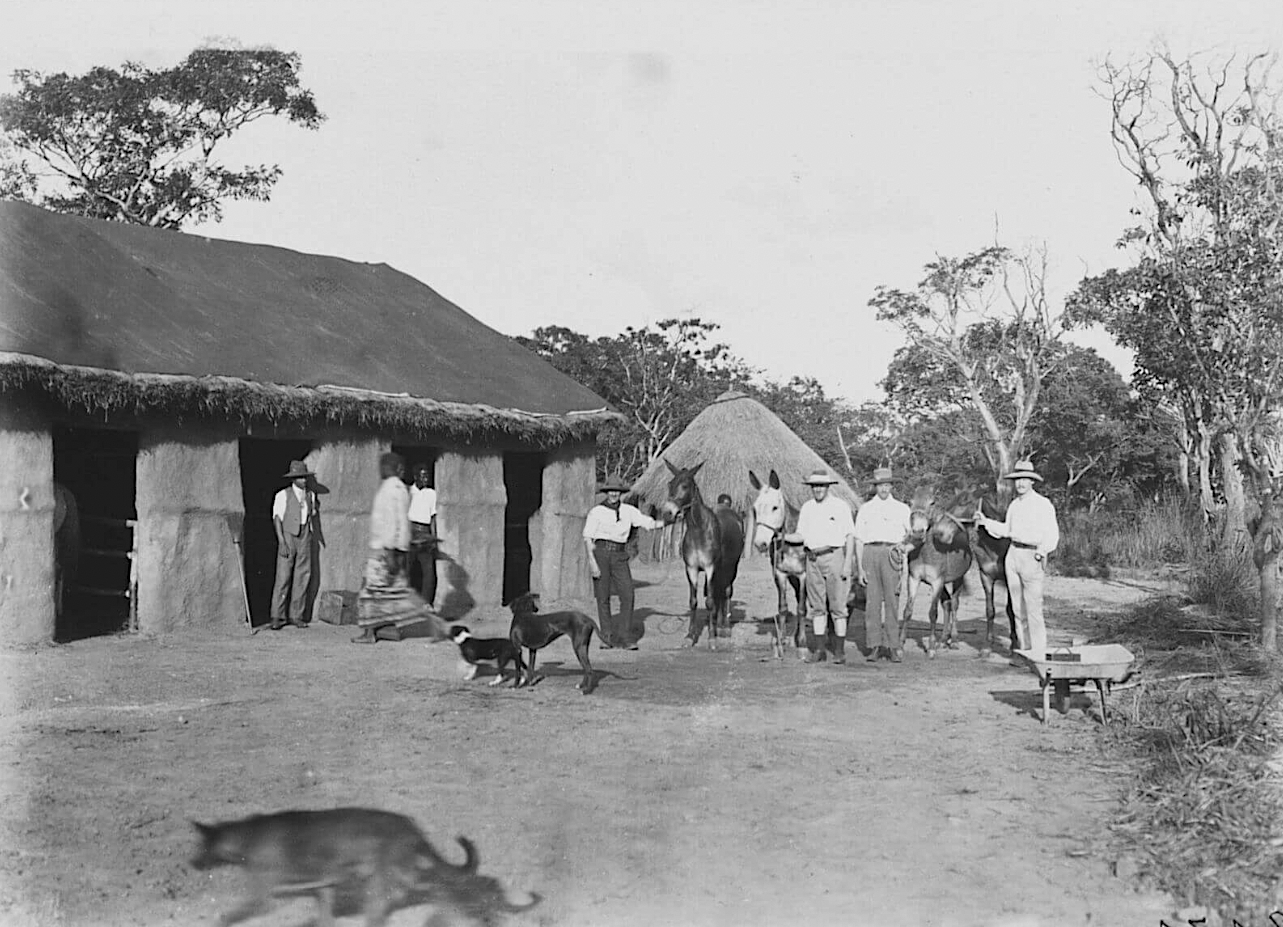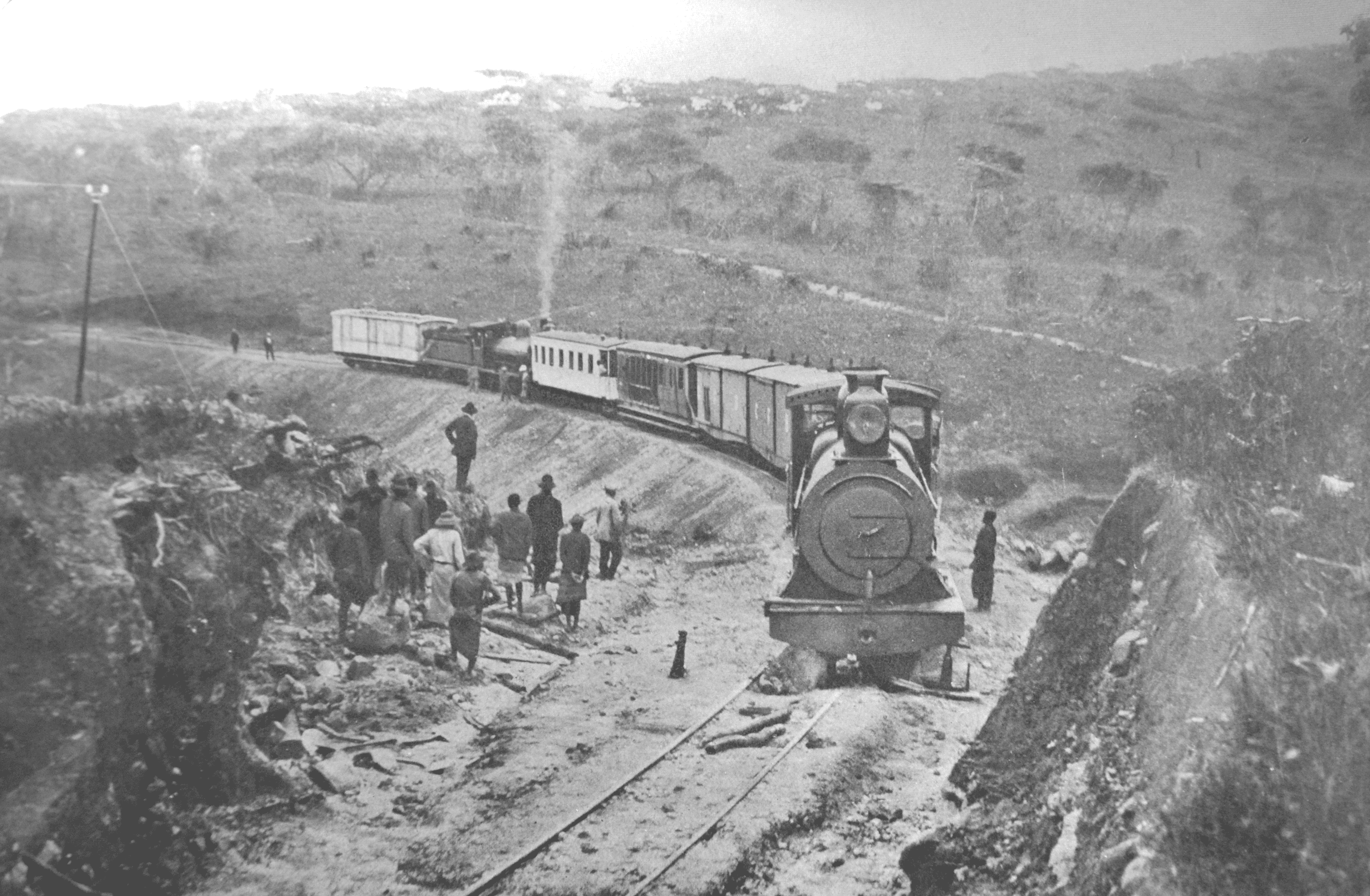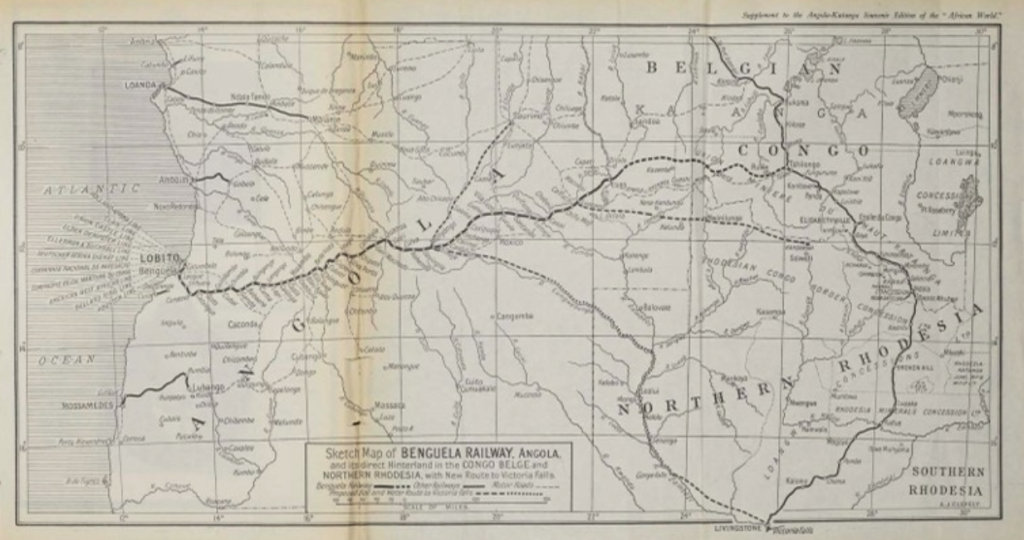BENGUELA RAILWAY, ANGOLA
The Benguela Railway, built between 1903 and 1931, was one of the most important mobility infrastructures developed during European colonialism in Africa, bringing together Portuguese, British and Belgian interests. The railway is 1,866 km long, with almost 60 stations, and connects Lobito, on the Angolan coast, with Luau, a small town near the eastern border – and then extends to the Katanga mining region in the Belgian Congo.
How to cite
ArchLabour: Architecture Colonialism and Labour (P.I. Ana Vaz Milheiro, ERC-funded 10.3030/101096606, 2024-2028). Benguela railway, Angola. Accessed on 3rd December 2025. Available at: https://archlabour.iscte-iul.pt/benguela-railway-angola/

01
Plan & Construction
Construction of the Benguela Railway began on 1 March 1903 and involved two British contractors with extensive experience of building railways in Africa. George Pauling & Co. started the earthworks and imported some rails from England. Th following year, Norton Griffiths & Co. continued the process, completing the first section of 197 kilometres to Cubal in 1908. Pauling was later reappointed and completed the railway to Luau in 1929 (with a long hiatus between 1913 and 1920 due to the economi effects of the First World War). Other smaller contractors, such as the Italian Vigano, also worked on some sections.
02
Labour
For the first decade, the work was carried out by 7,000 men working day and night in continuous shifts. Most came from abroad, including Ghana, Liberia (especially “kroo boys”), French West Africa (Senegal), Cape Verde, the Belgian Congo and South Africa. About 2,000 Indians (known as “coolies”) were recruited in Natal and India, some with their families. From 1912 there was a shift towards using local labour in Angola. By this time, construction work was being carried out by smaller teams. Some 2,200 Africans were involved in clearing land, earthworks, steelwork, bridge and telegraph construction and bricklaying. Their wages were “between 100 and 140 réis” – almost half the amount quoted by the Portuguese colonial government in 1900, perhaps because of the “voluntary” position of these men.


03
Skills & Technologies
Each section of the line faced different topographical conditions and logistical problems, requiring different techniques, materials and numbers of workers. The first section, for example, involved the construction of an advanced “rack” system. Unlike the “European” personnel, the African workers had no formal qualifications and were not expected to have experience in railway construction. Their assessment by the railway managers was based on ethnic prejudice as well as physical and social ability. Some groups, such as the Kroo, were valued for their physical strength, while others, such as the Quilengues men, were valued for their commitment to the work.
Fieldwork
In progress
Photographs and Drawings

Related Outputs
Building the Benguela Railway: laborers and construction skills
Unravelling colonial infrastructure legal framework – the Benguela railway
Imperial companies and railways between Angola and Belgian Congo, 1910-1930

